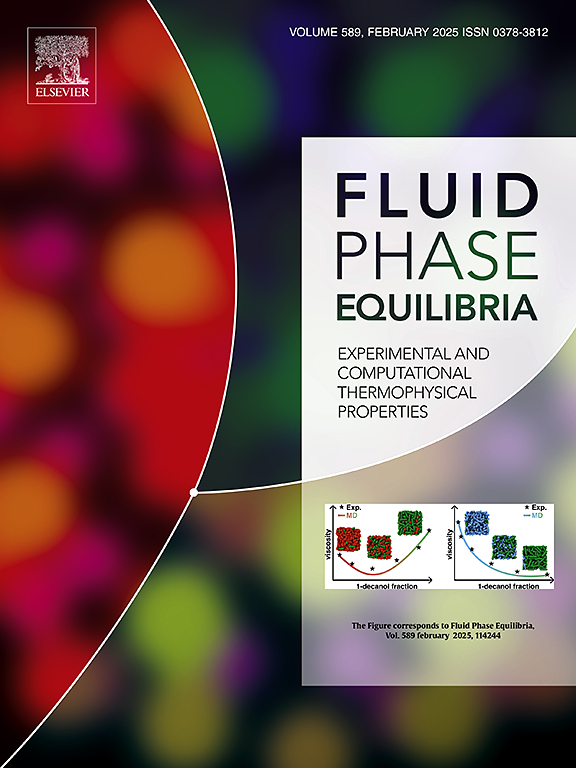Predicting transport properties of simple fluids using an extended FMSA model and a Mode-Coupling Theory
IF 2.8
3区 工程技术
Q3 CHEMISTRY, PHYSICAL
引用次数: 0
Abstract
A mode-coupling approach proposed by Egorov (J. Chem. Phys. 119 (2003) 4798‑4810 and J. Chem. Phys. 128 (2008) 144508) and combined with the first-order mean spherical approximation (FMSA) of Tang and Lu (J. Chem. Phys. 99 (1993) 9828‑9835) extended by an analytical SEXP approximation has been systematically tested for the prediction of transport properties (shear viscosity and self-diffusion coefficient) of simple fluids (interacting with various Mie n-6 potentials where n ranging from 9 to 24). Calculations were performed over a the full range of fluid density () and in a wide domain of temperature (). As a conclusion of this work, this purely predictive model (no adjustable parameters) is favorably compared with the molecular dynamics data related to a large variety of simple spherical molecules and has successfully predicted the shear viscosity and self-diffusion coefficient of the real noble fluids Ne, Ar, Kr and Xe using ab initio pair potentials.
求助全文
约1分钟内获得全文
求助全文
来源期刊

Fluid Phase Equilibria
工程技术-工程:化工
CiteScore
5.30
自引率
15.40%
发文量
223
审稿时长
53 days
期刊介绍:
Fluid Phase Equilibria publishes high-quality papers dealing with experimental, theoretical, and applied research related to equilibrium and transport properties of fluids, solids, and interfaces. Subjects of interest include physical/phase and chemical equilibria; equilibrium and nonequilibrium thermophysical properties; fundamental thermodynamic relations; and stability. The systems central to the journal include pure substances and mixtures of organic and inorganic materials, including polymers, biochemicals, and surfactants with sufficient characterization of composition and purity for the results to be reproduced. Alloys are of interest only when thermodynamic studies are included, purely material studies will not be considered. In all cases, authors are expected to provide physical or chemical interpretations of the results.
Experimental research can include measurements under all conditions of temperature, pressure, and composition, including critical and supercritical. Measurements are to be associated with systems and conditions of fundamental or applied interest, and may not be only a collection of routine data, such as physical property or solubility measurements at limited pressures and temperatures close to ambient, or surfactant studies focussed strictly on micellisation or micelle structure. Papers reporting common data must be accompanied by new physical insights and/or contemporary or new theory or techniques.
 求助内容:
求助内容: 应助结果提醒方式:
应助结果提醒方式:


